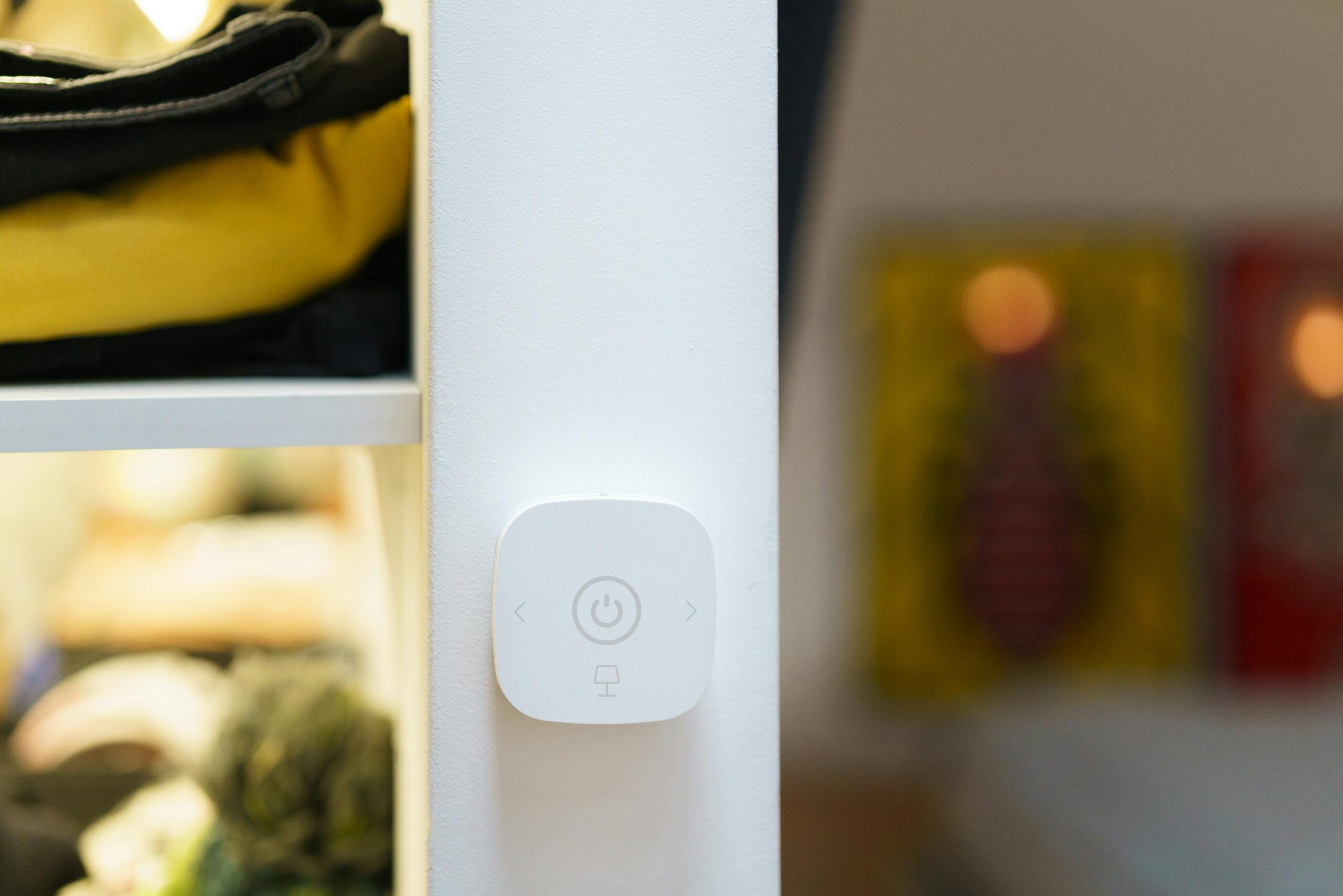Contents
- 1 Demystifying Smart Home Technology: Your Ultimate Webpage Guide
- 2 Intro
- 3 Understanding Smart Home Technology Basics
- 4 The Benefits of Integrating Smart Technology in Your Home
- 5 Choosing the Right Smart Home Devices
- 6 Setting Up Your Smart Home Network
- 7 Maximizing Your Smart Home’s Potential
- 8 What is the Smart Home Technology?
- 9 What are Examples of Smart Home Technology?
- 10 What is the Conclusion of Smart Home Technology?
Demystifying Smart Home Technology: Your Ultimate Webpage Guide
Intro
Welcome to your ultimate guide to demystifying smart home technology! In this comprehensive webpage guide, we will delve into the basics of smart home technology, explore the benefits of integrating smart devices into your home, provide tips on choosing the right devices, discuss setting up your smart home network, offer advice on maximizing your smart home’s potential, troubleshoot common issues, and look ahead to future trends in smart home technology. Whether you’re a tech enthusiast or a beginner in the world of smart homes, this guide is designed to help you navigate the exciting world of smart home technology webp. So let’s get started!
Understanding Smart Home Technology Basics
Smart home technology encompasses a network of devices, appliances, and systems interconnected through the internet, enabling remote management and automation of various household functions. This technology empowers homeowners to command their living environments with unprecedented convenience and efficiency. At its core, smart home technology utilizes devices such as smart thermostats, lighting solutions, security cameras, and voice-controlled assistants, each designed to enhance the functionality and comfort of your home. These devices can be operated through smartphone apps, voice commands, or even automatically, based on user-defined preferences or schedules. The principle behind smart home technology is to provide a seamless, interconnected ecosystem within your home, where devices communicate and work together to perform tasks, ranging from adjusting the temperature to enhancing home security, with minimal human intervention. This not only contributes to energy savings by optimizing resource use but also offers a level of customization and control over the home environment that was previously unimaginable. With the integration of smart home technology, homeowners can enjoy a blend of convenience, security, and efficiency, transforming their living spaces into more responsive and adaptive environments.
The Benefits of Integrating Smart Technology in Your Home
Incorporating smart technology into your residence ushers in a plethora of advantages that cater to efficiency, security, and lifestyle enhancement. By embracing smart thermostats, you’re not just fine-tuning your living space’s temperature; you’re also streamlining your energy consumption, leading to substantial savings on utility bills. The addition of smart security cameras escalates your home’s safety, providing peace of mind through real-time surveillance and instant alerts to any unusual activity, directly to your smartphone. Moreover, the convenience factor introduced by voice assistants cannot be overstated. These digital helpers, such as Amazon Alexa or Google Assistant, empower you to manage an array of devices across your home with simple voice commands. This hands-free control extends from playing your favorite music to adjusting lighting, all contributing to a more connected and efficient home environment. Beyond individual benefits, the collective impact of integrating these smart technologies fosters a harmonious ecosystem within your home, where each device’s functionality is maximized, contributing to an overall lifestyle that is not just modern but also adaptable to your personal preferences and routines. This transformative approach to everyday living underscores the essence of smart home technology – enhancing your home’s functionality while simplifying daily tasks.
Choosing the Right Smart Home Devices
Navigating the vast landscape of smart home technology requires a thoughtful approach to ensure that you invest in devices that align with your lifestyle and home automation goals. Begin your selection process by pinpointing areas within your home that could benefit from automation or enhanced control. Is it the energy management with smart thermostats, or perhaps, the security aspect with intelligent cameras and alarm systems?
Once you’ve identified these areas, dive into the research phase. Compare different brands and models, focusing on their compatibility not just with each other but also with any existing devices you might own. This step is crucial as it ensures a cohesive smart home ecosystem. Pay attention to the product specifications, seeking out features that match your requirements, whether it’s voice command capabilities, integration with mobile applications, or interoperability with various platforms such as iOS and Android.
Equally important is the evaluation of non-technical factors. User reviews can offer invaluable insights into real-world performance, ease of use, and reliability. Warranty and customer support services provided by the manufacturer can also be deciding factors, offering peace of mind and assistance when needed.
Through careful consideration of these aspects, you will be well-equipped to make informed decisions, selecting smart home devices that not only meet your current needs but are also scalable, allowing for future expansions of your smart home system.
Setting Up Your Smart Home Network
Embarking on the journey of establishing your smart home network is a pivotal step towards achieving an interconnected and automated living space. It’s essential to commence by selecting a reliable central hub or router, which will serve as the heart of your smart home, enabling seamless communication between your various smart devices. Prioritize a network setup that emphasizes security; adopting robust encryption methods and a strong, unique password is paramount to safeguard your personal data and privacy. During the installation process of each smart device, adherence to the manufacturer’s detailed guidelines is crucial for ensuring they are correctly connected to your network and functioning optimally. Be mindful of positioning your router centrally and consider the use of range extenders or mesh Wi-Fi systems to eliminate dead zones, thus maintaining a strong and consistent signal throughout your home. This foundational setup is instrumental in unlocking the full potential of your smart home, facilitating a smooth and efficient operation of your connected devices.
Maximizing Your Smart Home’s Potential
Unlock the full capabilities of your smart home by delving into the depths of device features and customizations. Design routines that seamlessly integrate your daily activities with smart technology, such as waking up to gradually brightening lights or having your coffee maker start brewing at your alarm. Leverage voice command functionality to create a more interactive and responsive environment. By saying simple phrases, you can control various aspects of your home, making multitasking more manageable and your lifestyle more convenient. Additionally, explore the power of app integrations and third-party applications to expand the capabilities of your devices beyond their standard functions. This can include anything from syncing your smart lights with your entertainment system for an immersive movie night to integrating your security system with your phone for real-time alerts no matter where you are.
Stay proactive by keeping your devices up-to-date with the latest software to ensure optimal performance and security. Regular updates often introduce new features that can enhance your experience and protect your devices from vulnerabilities. Engaging with the online community of smart home enthusiasts can also provide valuable tips and tricks for getting the most out of your setup. By continuously experimenting and updating your system, you can ensure that your smart home evolves with your needs and preferences, offering a truly customized and efficient living space.
What is the Smart Home Technology?
Overcoming Challenges and Privacy Concerns
Smart home technology, while offering convenience and efficiency, brings its own set of challenges and privacy concerns that users must navigate. A primary issue is the potential for hacking and data breaches, which can expose personal information and allow unauthorized control over home devices. To mitigate these risks, it’s essential for manufacturers to implement robust security measures, such as encryption and two-factor authentication, and for users to regularly update their devices’ software to patch any vulnerabilities.
Another concern is the collection and use of personal data by smart home devices. Users should be aware of the data their devices are collecting and how it is being used, paying close attention to privacy policies and settings. Opting for products from reputable companies that prioritize user privacy and data protection can also provide an additional layer of security.
Furthermore, creating a secure home network, by using strong, unique passwords and considering the use of a separate network for smart home devices, can further protect against external threats. By actively engaging with these privacy and security measures, users can enjoy the benefits of smart home technology while minimizing potential risks.
What are Examples of Smart Home Technology?
The Future of Smart Home Technology
As we navigate through the rapidly evolving landscape of smart home technology, it’s clear that the future holds even more integrated, intuitive, and innovative solutions designed to enhance our daily lives. What are examples of smart home technology that point towards this future? We’re looking at advancements in AI-driven assistants capable of more personalized interactions, seamless integration of household devices to create truly smart environments, and next-generation security systems that provide unparalleled protection and peace of mind.
The next wave of smart home technology is also set to revolutionize energy management, with systems that learn and adapt to your energy usage patterns, optimizing consumption and significantly reducing costs. Additionally, we can anticipate the emergence of more sophisticated health monitoring devices, capable of not only tracking vital signs but also predicting potential health issues before they become serious, all from the comfort of our homes.
As we stand on the cusp of these advancements, the examples of smart home technology available today are just the tip of the iceberg. The future is poised to bring about a convergence of digital and physical spaces in ways we’re only beginning to imagine, making our homes more connected, efficient, and safe than ever before.
What is the Conclusion of Smart Home Technology?
Concluding Thoughts: Balancing Benefits and Challenges
In pondering over what is the conclusion of smart home technology, it becomes evident that the answer lies in the delicate equilibrium between its benefits and inherent challenges. On one hand, smart home technology offers unparalleled convenience, enhanced security, and potential energy savings, reshaping how we interact with our living spaces. The ability to control our homes remotely, automate daily tasks, and receive real-time updates about our property’s security and energy consumption speaks volumes about the advantages of integrating technology into our domestic lives.
On the other hand, the challenges cannot be overlooked. Privacy concerns, cybersecurity threats, and the digital divide pose significant obstacles. The apprehension that personal information could be compromised or that sophisticated hackers could gain control of our homes is a legitimate fear. Additionally, there’s the issue of accessibility – not everyone can afford the luxury of a smart home, potentially widening the gap between different socioeconomic classes.
The conclusion of smart home technology, therefore, is not a definitive endpoint but a continuous journey towards innovation, striving to maximize benefits while diligently addressing and mitigating the challenges. As we advance, it’s crucial for developers, users, and policymakers to work collaboratively, ensuring that smart home technology evolves in a way that is secure, inclusive, and beneficial for all.


